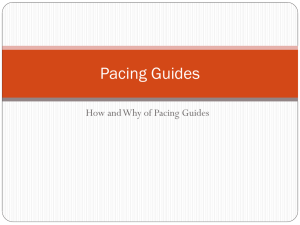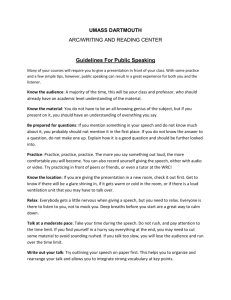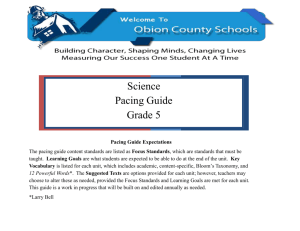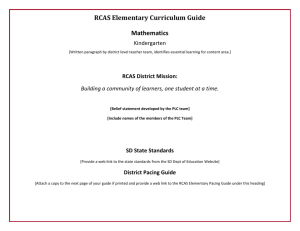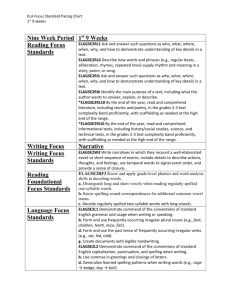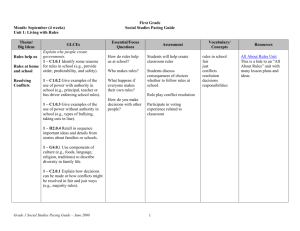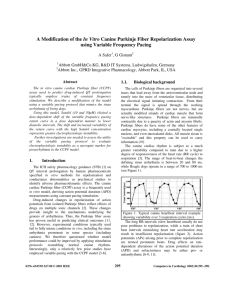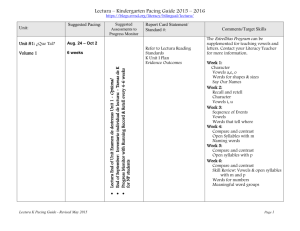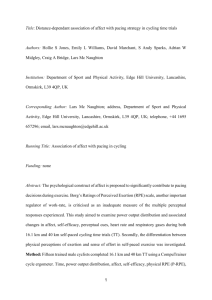EL-P-DIU-S-1
advertisement
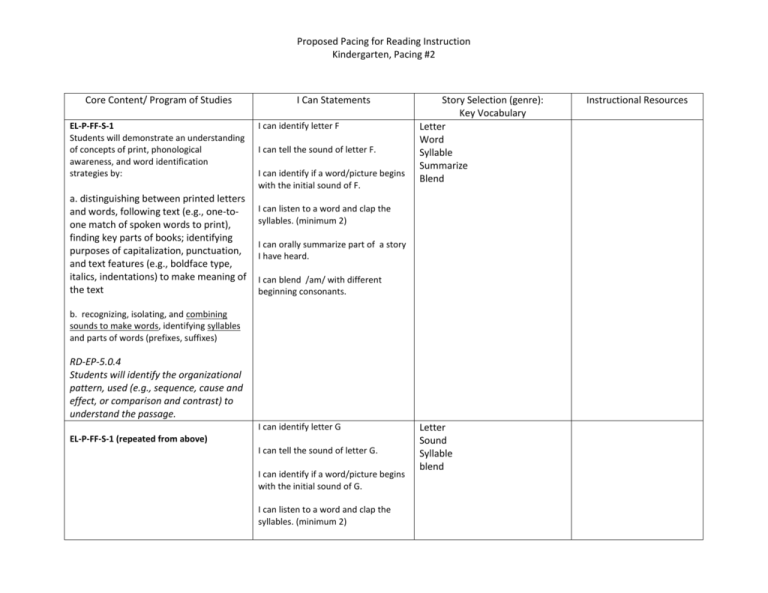
Proposed Pacing for Reading Instruction Kindergarten, Pacing #2 Core Content/ Program of Studies EL-P-FF-S-1 Students will demonstrate an understanding of concepts of print, phonological awareness, and word identification strategies by: a. distinguishing between printed letters and words, following text (e.g., one-toone match of spoken words to print), finding key parts of books; identifying purposes of capitalization, punctuation, and text features (e.g., boldface type, italics, indentations) to make meaning of the text I Can Statements I can identify letter F I can tell the sound of letter F. I can identify if a word/picture begins with the initial sound of F. Story Selection (genre): Key Vocabulary Letter Word Syllable Summarize Blend I can listen to a word and clap the syllables. (minimum 2) I can orally summarize part of a story I have heard. I can blend /am/ with different beginning consonants. b. recognizing, isolating, and combining sounds to make words, identifying syllables and parts of words (prefixes, suffixes) RD-EP-5.0.4 Students will identify the organizational pattern, used (e.g., sequence, cause and effect, or comparison and contrast) to understand the passage. I can identify letter G EL-P-FF-S-1 (repeated from above) I can tell the sound of letter G. I can identify if a word/picture begins with the initial sound of G. I can listen to a word and clap the syllables. (minimum 2) Letter Sound Syllable blend Instructional Resources Proposed Pacing for Reading Instruction Kindergarten, Pacing #2 I can blend /at/ with different beginning consonants. I can follow a one step direction. EL-P-FF-S-1 (repeated from above) I can identify letter H I can tell the sound of letter H. Question “go” “we” EL-P-DIU-S-1 Students will use comprehension strategies (e.g., using prior knowledge, predicting, generating clarifying and literal questions, constructing sensory images, locating and using text features) while reading, listening to, or viewing literary and informational texts I can identify if a word/picture begins with the initial sound of H. I can match 2 pictures that start with the same sound. I can answer literal questions about a story that has been read to me. I can read high frequency words go and we. EL-P-FF-S-1 (repeated from above) I can identify letter I I can tell the sound of letter I. I can identify if a word/picture begins with the initial sound of I. I can listen to a word and tell how many sounds it has (up to 3) I can blend /ap/ with different beginning consonants. EL-P-FF-S-1 (repeated from above) I can provide a word that rhymes with another word. I can identify letter J rhyme Harcourt Pre-Decodable book, We Go. Proposed Pacing for Reading Instruction Kindergarten, Pacing #2 EL-P-IT-S-9 Students will demonstrate understanding of literary elements and literary passages/texts: identify problems and explain how conflicts are resolved I can tell the sound of letter J. I can identify if a word/picture begins with the initial sound of J. Final sound Problem solution I can repeat the last sound in a word. I can blend /an/ , /at/, and /ap/ with different beginning consonants. I can tell the problem and solution of a story that is read to me. I can tell the sound of letter k. EL-P-FF-S-1 (repeated from above) EL-P-DIU-S-1 Students will use comprehension strategies (e.g., using prior knowledge, predicting, generating clarifying and literal questions, constructing sensory images, locating and using text features) while reading, listening to, or viewing literary and informational texts I can identify if a word/picture begins with the initial sound of k. I can read high frequency words on and to. I can predict what happens next in a story . “on” “to” predict

